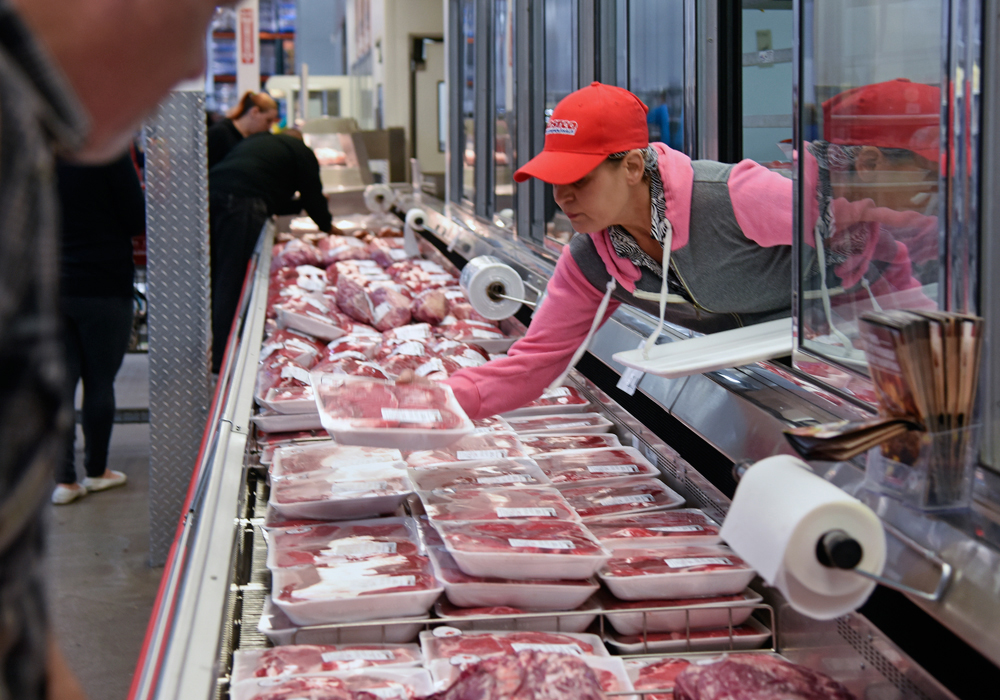The language in trade deals is normally complex and cloudy.
But the text in the Comprehensive Economic Trade Agreement with Europe (CETA) suggests that Canada can impose duties on European beef and pork if those imports are harming Canada’s red meat industry.
The language is found in Article 3.4 of CETA.
Read Also

Exports off to a slow start after last year’s torrid pace
Canadian grain, oilseed and pulse exports are off to a slow start, but there are some bright spots, according to the Canadian Grain Commission’s most recent weekly export data report.
It says Canada and the EU “reaffirm their rights and obligations concerning global safeguard measures under Article XIX of GATT 1994 and the Safeguards Agreement.”
That language is not clear.
But the wording in Article 19 of GATT (General Agreement on Tariffs and Trade) is easier to understand. It says:
If a good is “being imported into the territory of the other Party in such increased quantities … that the imports of the good from that Party constitute a substantial cause of serious injury, or threat thereof, to a domestic industry … the Party into whose territory the good is being imported,” may do the following:
- Increase the rate of customs duty on that good.
- Stop decreasing the rate of customs duty on that good.
So, in theory, Canada could impose duties on European pork and beef, arguing the imports are harming Canada’s red meat industry. The argument would begin with trade data.
In 2022, Canada exported $22 million worth of beef to Europe and $1.2 million in pork.
Europe exported $114 million worth of beef to Canada and $285 million in pork. That’s a trade deficit of about $367 million.
To put that in perspective:
- In 2017 Canada shipped $11 million worth of pork and beef to Europe.
- That year we imported $138 million worth of those products from the EU, for a trade deficit of $127 million.
In a period of five years, Canada’s red meat trade deficit with Europe went from $127 million to $367 million.
Thanks to CETA and Canada’s openness to free trade, European product now represents 18 percent of all pork imports and nine percent of beef imports, if Britain is included.
Those aren’t massive percentages. But a $367 million trade deficit with Europe could be harming Canada’s red meat industry.
Last December, Olymel closed its pork packing plant in Vallée-Jonction, Que., because the company was losing hundreds of millions from its fresh pork operations.
“The pandemic, the labour shortage, the instability of export markets and the increase in raw material costs, among other factors, have created unprecedented negative conditions that have hit the pork industry hard and resulted in losses,” Olymel said.
There’s also the on-the-farm reality in Canada, where it’s become less appealing to raise pigs. With price instability and the labour shortage, some producers (even Hutterite colonies) have abandoned the hog business.
In 2020, George Matheson, former chair of the Manitoba Pork Council, said he had lost faith in the future of Canada’s hog sector because pig prices are so uncertain.
“For a young person, I wouldn’t encourage them to go into pig production. And those are pretty strong words from the chair of Manitoba Pork,” said Matheson, who farmed near Stonewall, Man.
There’s an abundance of similar examples in Canada’s beef industry. Dozens of cow-calf ranchers have quit the business and their farms are being converted to crop production in Western Canada.
Then there are part-time cattle producers, who need a full-time job to support their cattle business. A sizable chunk of their money comes from driving a truck or working as a nurse. Raising cattle is a sideline.
“Numbers that I’ve seen from CCA (Canadian Cattle Association), 75 to 85 percent of livestock producers have full-time or part-time jobs,” said Bill Campbell, who farms near Minto, Man.
That includes his daughter and son-in-law, who raise cattle by Douglas, Man.
“(They) have two full-time jobs and they have 140 cows. They need the jobs to pay for the cows.”
There isn’t a direct line connecting the dots between European imports and the financial struggles of a part-time cattle producer in western Manitoba or the financial statements of a pork processor like Olymel. Many, many factors contribute to the success or failure of a business in Canada’s red meat industry.
But $399 million in annual imports from Europe, considering Canada ships a few kilos of red meat to the EU, is not helping the cause. If the five-year trend continues, imports will soon reach $500 million.
That brings us back to the CETA deal, which says Canada and the EU have the right to use safeguard agreements.
Sometimes called an “escape clause”, trade negotiators include such language in deals because it makes free trade more palatable to anti-trade groups (i.e. European farmers).
Safeguard agreements are much bigger than the CETA deal. The World Trade Organization has a safeguard agreement and its website explains how countries can use it.
“Safeguard measures may be applied only following an investigation conducted by competent authorities,” the WTO says. “In determining whether serious injury or threat is present, investigating authorities are to evaluate all relevant factors … and are not to attribute to imports, injury caused by other factors.”
The federal government also has a website, explaining how the process works in Canada.
It would be a lengthy process, but the federal government could use the safeguards to protect Canada’s red meat industry from excessive European imports. The odds of the government doing that on its own are about zero. Minister of International Trade, Mary Ng, is a staunch defender of the agreement.
“CETA serves as the cornerstone of Canada’s strong trade and investment ties with the EU and we’ve seen the benefits of the agreement as it builds on our close people-to-people ties,” says Ng.
The federal government will do nothing unless Canada’s agriculture sector applies much more pressure on the CETA issue. Maybe that will happen.
Or maybe it won’t.
Contact robert.arnason@producer.com


















